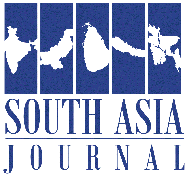 TRIVAN ANNAKKARAGE
TRIVAN ANNAKKARAGE
The rivers of the Kashmir region feed into the Indian subcontinent, including the Indus and its tributaries – Jhelum, Chenab, Ravi, Beas, and Sutlej. India and Pakistan are heavily reliant on these rivers for agriculture and hydropower, while China controls key headwaters.
The 1960 Indus Waters Treaty, mediated by the World Bank, has long helped prevent conflict over water. However, following the 2025 Pahalgam terror attack, India’s threat to withdraw from the treaty has heightened tensions. Islamabad views any attempt to block the Indus, Jhelum, or Chenab as an act of war (since these rivers have been allocated to Pakistan via the treaty).
Further complicating matters, the Indus and Sutlej originate in Tibet. Given China’s close ties with Pakistan, Islamabad could urge Beijing to restrict India’s access to these waters, threatening New Delhi.
These water management challenges are illustrative of why Kashmir has remained a complex and stubborn geopolitical flashpoint. Kashmir is also endowed with rich natural resources. It contains vast forests that could yield timber from deodar cedar and pine, as well as medicinal plants that treat a wide range of ailments. Mineral wealth includes bauxite and coal, gypsum, precious stones, graphite, lithium, and magnesite – key materials for the digital age. The region also produces high-value crops such as apples, walnuts, and saffron, while its pristine landscapes hold immense potential for tourism.
These economic benefits remain largely unrealised due to the ongoing territorial dispute.
Kashmir’s mountainous terrain makes it a vital vantage point for surveillance and military exercises, meaning the territory is intertwined with national security for the three countries.
Until identity-driven narratives give way to pragmatic diplomacy and economic cooperation, Kashmir will likely remain a flashpoint.
China currently controls Aksai Chin (acquired during the Sino-Indian War of 1962) and Shaksgam (ceded by Pakistan in 1963 through a boundary agreement). Unlike India and Pakistan, China does not claim the entire region of Kashmir. It considers Aksai Chin and Shaksgam as historical territories of the Qing Dynasty, rejecting the British-drawn Macartney-MacDonald Line of 1899. For Beijing, these areas are integral to Xinjiang and Tibet and thus have nothing to do with the ongoing Indo-Pak dispute over Kashmir.
India, however, claims all of Kashmir, based on the 1947 Instrument of Accession signed by Maharaja Hari Singh and the endorsement of the British-era border. For New Delhi, Kashmir is an inseparable part of its secular, federal identity and sovereignty. This is why India does not recognise either Pakistan’s claims to Kashmir or the legitimacy of Pakistan’s cession of Shaksgam to China.
Pakistan views Kashmir as fundamental to its founding Islamic identity. This is even reflected in the country’s name (derived from its five main provinces) where ‘K’ and ‘I’ denote Kashmir (Punjab–Afghan–KashmIr–Sindh–BalochisTAN). Following the logic of the 1947 Radcliffe Line, which partitioned India and Pakistan based on religious demographics, Islamabad argues that Kashmir, being a Muslim-majority region occupied by India, should rightfully belong to Pakistan. Interestingly, Pakistan does not claim Aksai Chin or Shaksgam, suggesting a tacit alignment with China against India — a classic case of “the enemy of my enemy is my friend.”
India remains wary of this Sino-Pakistani partnership. In 1984, India launched Operation Meghdoot to take control of the Siachen Glacier amid intelligence reports that Pakistan intended to occupy the area to link up with Chinese forces. The operation shattered a 12-year peace and ushered in a more violent era marked by secessionist terror groups in India-administered Kashmir – activities New Delhi often attributes to Islamabad.
India is equally suspicious of the China-Pakistan Economic Corridor (CPEC), a flagship component of China’s Belt and Road Initiative, which passes through Pakistan-administered Kashmir. India fears that such infrastructure projects over time will gradually erode its territorial claims and normalize the control of its adversaries over Kashmir’s disputed areas.
The Kashmir conflict cannot be fully understood through the lens of strategic geography or resource competition alone. The region has become a symbolic core of national identity for all three stakeholders. Until identity-driven narratives give way to pragmatic diplomacy and economic cooperation, Kashmir will likely remain a flashpoint – one that continues to cost peace, development, and lives not just for India and Pakistan but also for the people living in Kashmir.
The article appeared in the lowyinstitute
